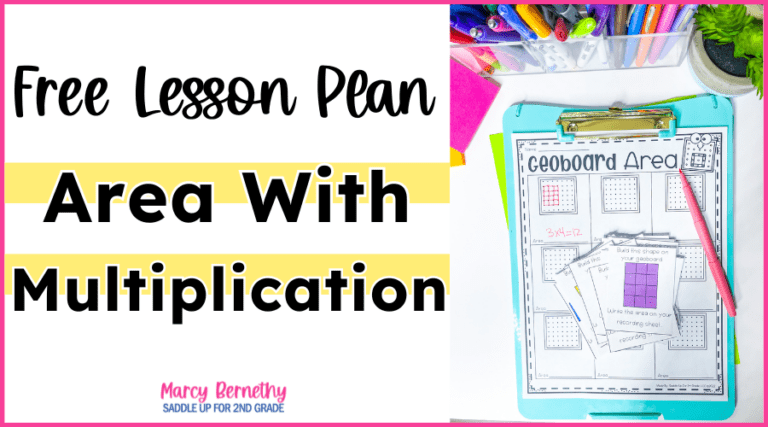

Join me for a FREE, Guided Math workshop to discover how to easily incorporate Guided Math into your current schedule!
Teaching about 3D shapes is very important in 2nd grade. There are so many real life examples of 3D shapes found in the world. These foundations will also help students in their future learning and higher-level math classes in a fun way. If you’re looking for a way to make your geometry math lessons hands-on for your students, check out these 3D shapes geometry activities for 2nd grade to add to your lesson plans.
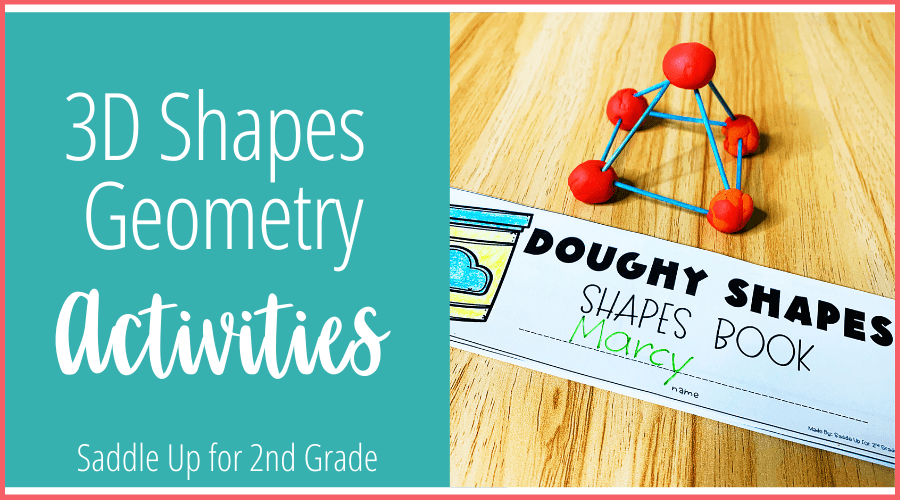
3-D shapes are solid figures that are made up of 3 dimensions, length, width, and height. They have thickness (depth), which makes them different from 2D shapes.
3D shapes are solid figures made up of edges, vertices, and faces. The edges make up the sides of the shape. The vertices are the points. Lastly, the faces are the flat surface that allow the shape to stand.
A few examples of 3D shapes are cubes, rectangular prisms, spheres, cones, and cylinders.
One of my favorite strategies for introducing new mathematical concepts is using an anchor chart. I like to create a whole group anchor chart with my students so that they can walk through the foundations of the concept with me.
This sparks great conversation, allows students to gain exposure to mathematical vocabulary, and gives them a visual aid of the concept. This is very important when teaching about 3D shapes.
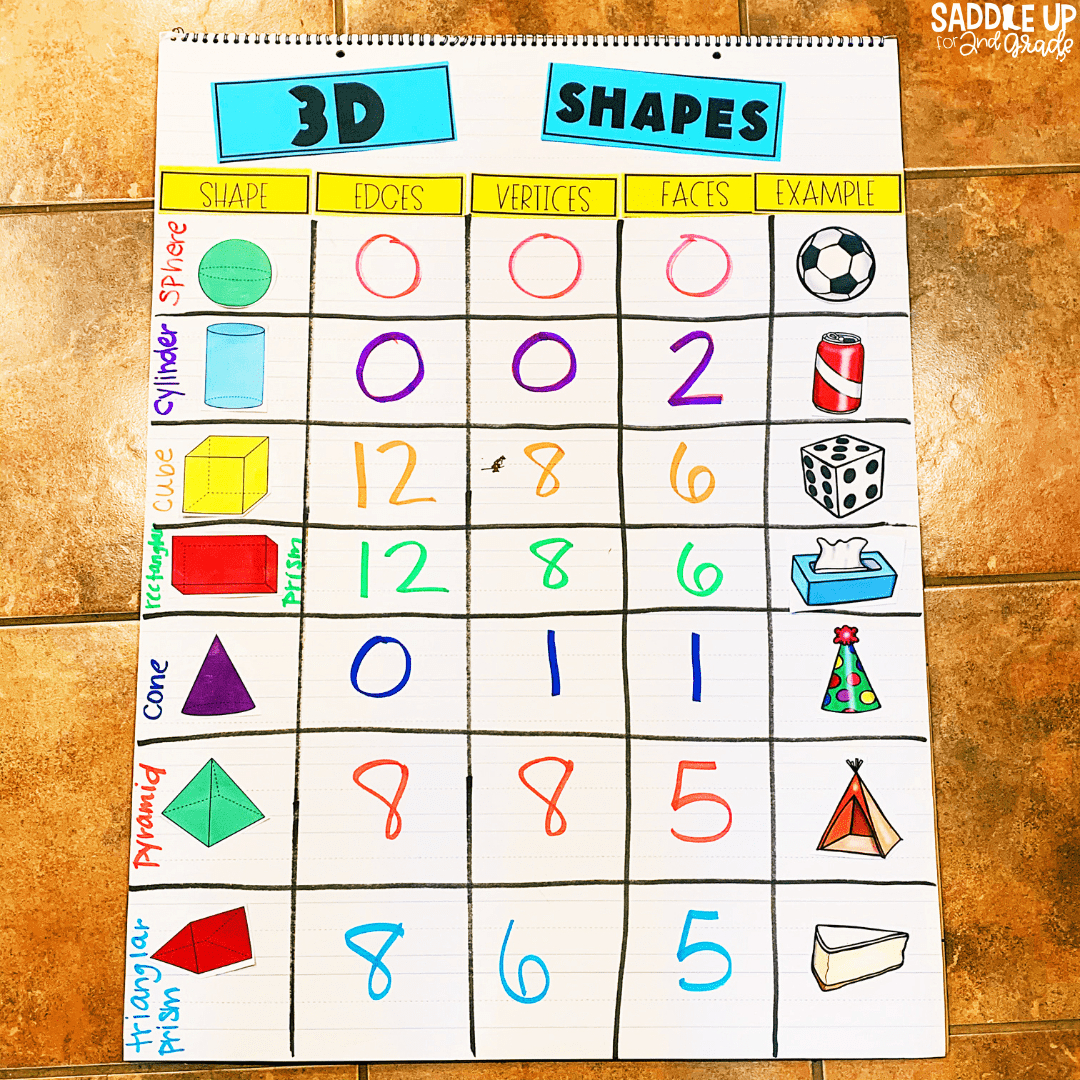
While I like to create the classroom anchor chart that goes on display in a whole group setting, it’s also important for students to apply what they have learned about the concept.
After creating the anchor chart, I have students create a mini version in their math journals. This is a great reference for students to go back to anytime they need to during the math unit. It’s also great for spiral review throughout the year.
Now that you know more about what 3D shapes are and have a solid strategy for introducing them to your students, read on for different ways of teaching about 3D shapes that are hands-on and much fun.
When teaching about 3D shapes in your geometry unit, it’s important for students to understand the relationship between 2D and 3D shapes. 3D shape nets are perfect for breaking down this relationship.
A net of a shape that is 3D can be unfolded. By using 3D shape nets, students will be able to see what a 3D shape would look like if it was opened up and laid out flat.
Therefore, they can see exactly what 2D shapes were used to build the shape along with the number of edges, vertices, and faces.
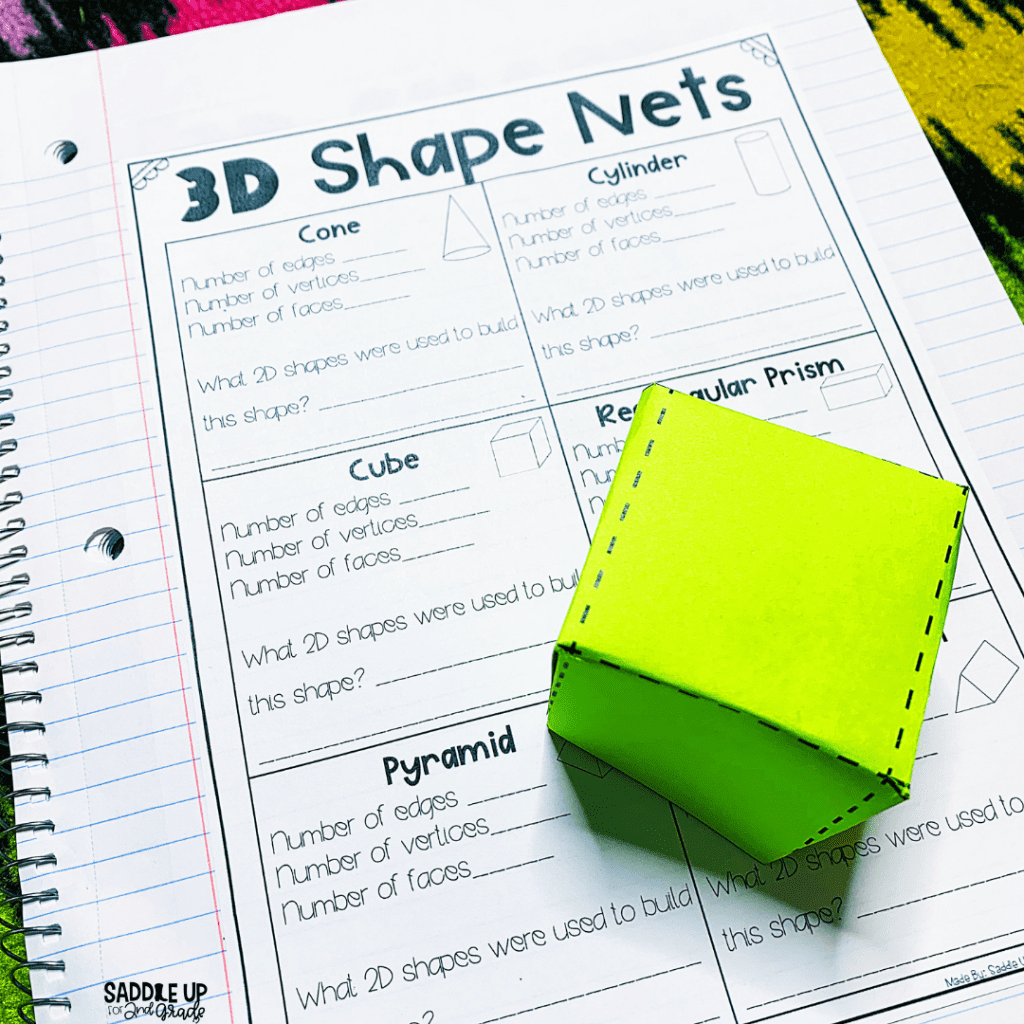
The more hands-on students can get when you’re teaching about 3D shapes, the more they’ll understand the concept of the three dimensions and how they work together to create a solid shape.
All you need to construct 3D shapes are some basic classroom supplies, such as toothpicks and play-doh. The toothpicks represent the edges of the shapes being built while the play-doh represents the vertices.
This one is a class favorite because you can use marshmallows instead of play-doh, but I’ve found that play-doh creates a sturdier shape and holds everything together better.
Students can use the toothpicks and play-doh to create various 3D shapes during your geometry unit.
If you’re looking for other manipulatives and tools to use in your geometry unit, check out this blog post.
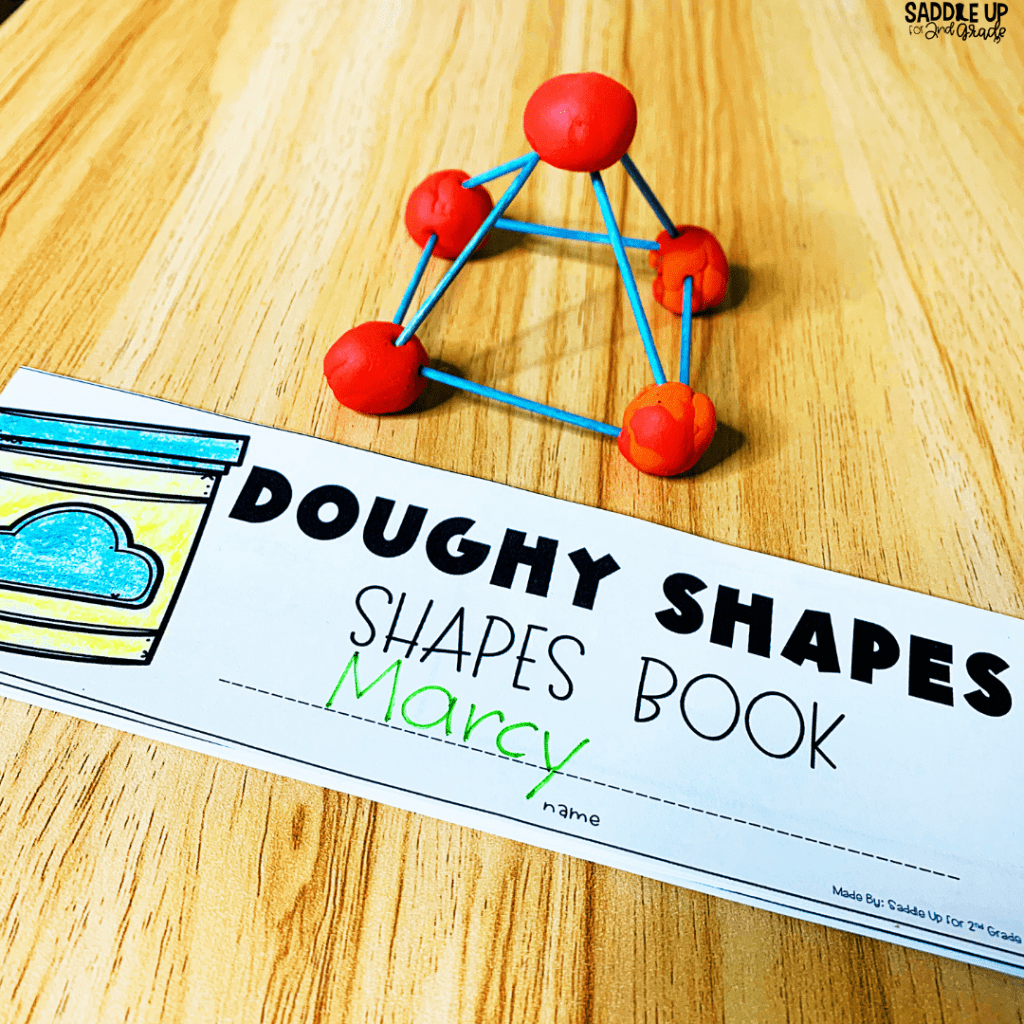
As I mentioned at the beginning of this post, 3D shapes are everywhere in the real world. Students need to recognize that shapes can be found in the world around them and be able to identify when a real object is a 3D shape.
You can provide opportunities for teaching about 3D shapes in the real world by taking them for a walk around the school or outside. As you walk around, have students identify the various shapes they see. They can even record them in their math journal.
Another way to reinforce practice with real-world 3D shapes is to incorporate the use of real-life objects and pictures. You can do this during your math stations or independent practice.
As your students work with real-life photos of 3D shapes in geometry, they will begin to recognize when shapes are alike and when they are different.
To help them gain a deeper understanding of real-world 3D objects, have them identify shapes that don’t belong in a certain category. This encourages critical thinking as they look at the shape attributes and figure out which shape doesn’t match the rest.
This Odd Shape Out task card activity is a fun way for students to identify shapes and determine which one doesn’t belong. They’ll record their answers from the task cards in their math journals using this great resource, the Odd Shape Out activity.
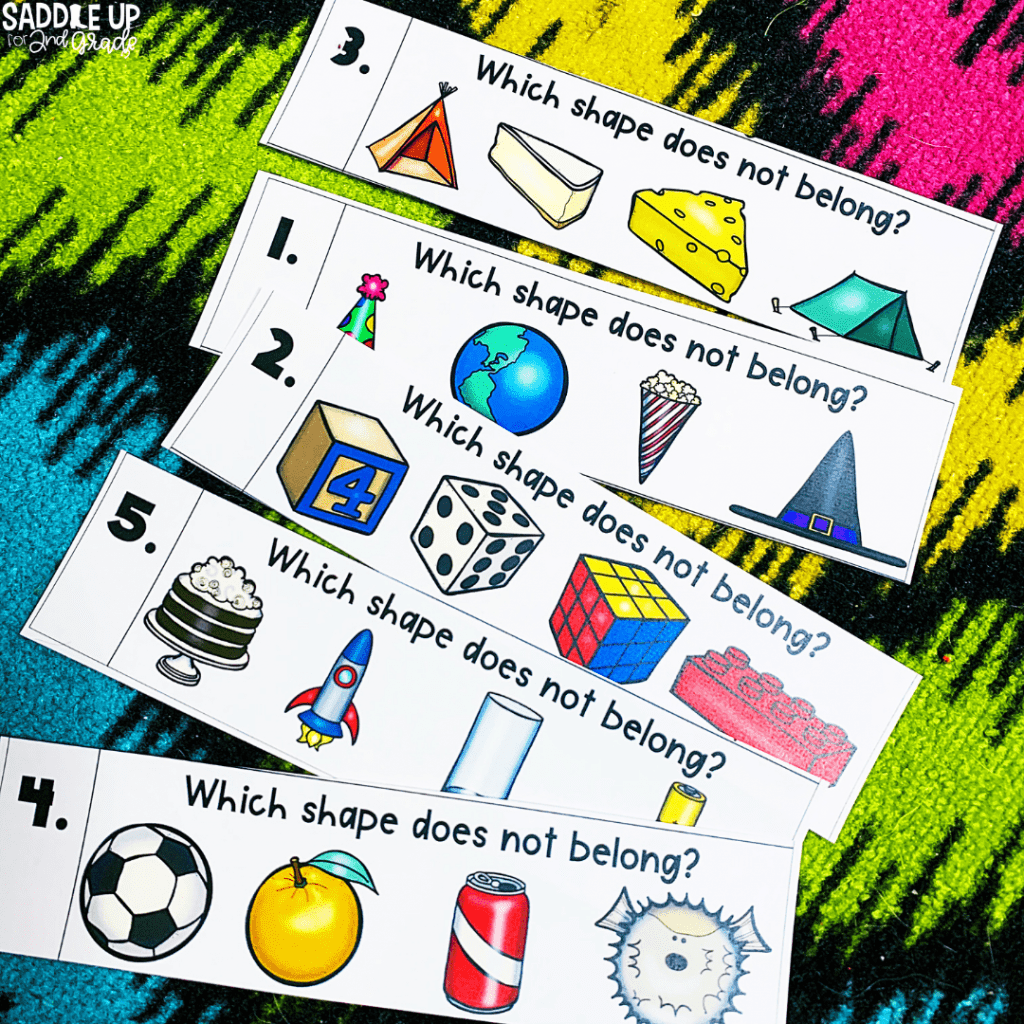
When teaching your geometry unit, you want to keep the activities as fun as possible for maximum student engagement. This Shape Headbands activity from my Geometry Guided Math Unit is my favorite way to get kids excited when teaching about 3D shapes!
Students will team up to play this game. One student at a time will wear the shape headband and attach a shape card to the front without looking. They’ll use the shape band question sheet to ask their teammates questions about the shape they’re wearing.
As they go through the questions and hear the answers, they’ll reference the shape chart until they figure out what their shape is.
This activity is not only fun for the students, but it requires both the student wearing the headband and the other teammates to think critically about the shape and its attributes.
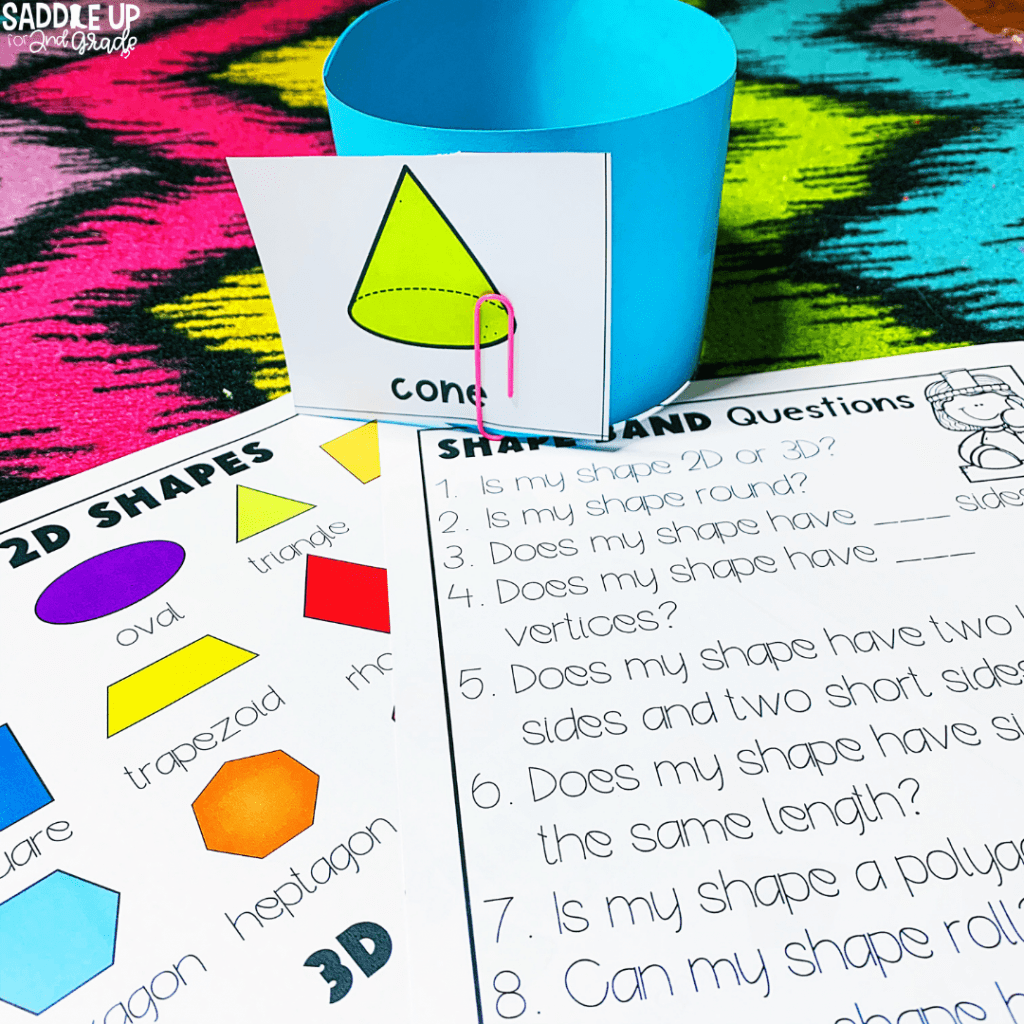
Incorporating technology when teaching about 3D shapes geometry lessons is another way to keep students engaged in the learning. This also allows students to work with 3D shapes in a different way.
Students can practice identifying shapes and their attributes with these Geometry Boom Cards. These interactive digital task cards are no prep and are a perfect way for students to practice self-checking. You can add this great resource to your math centers, use them for independent work, or assign them to your early finishers.
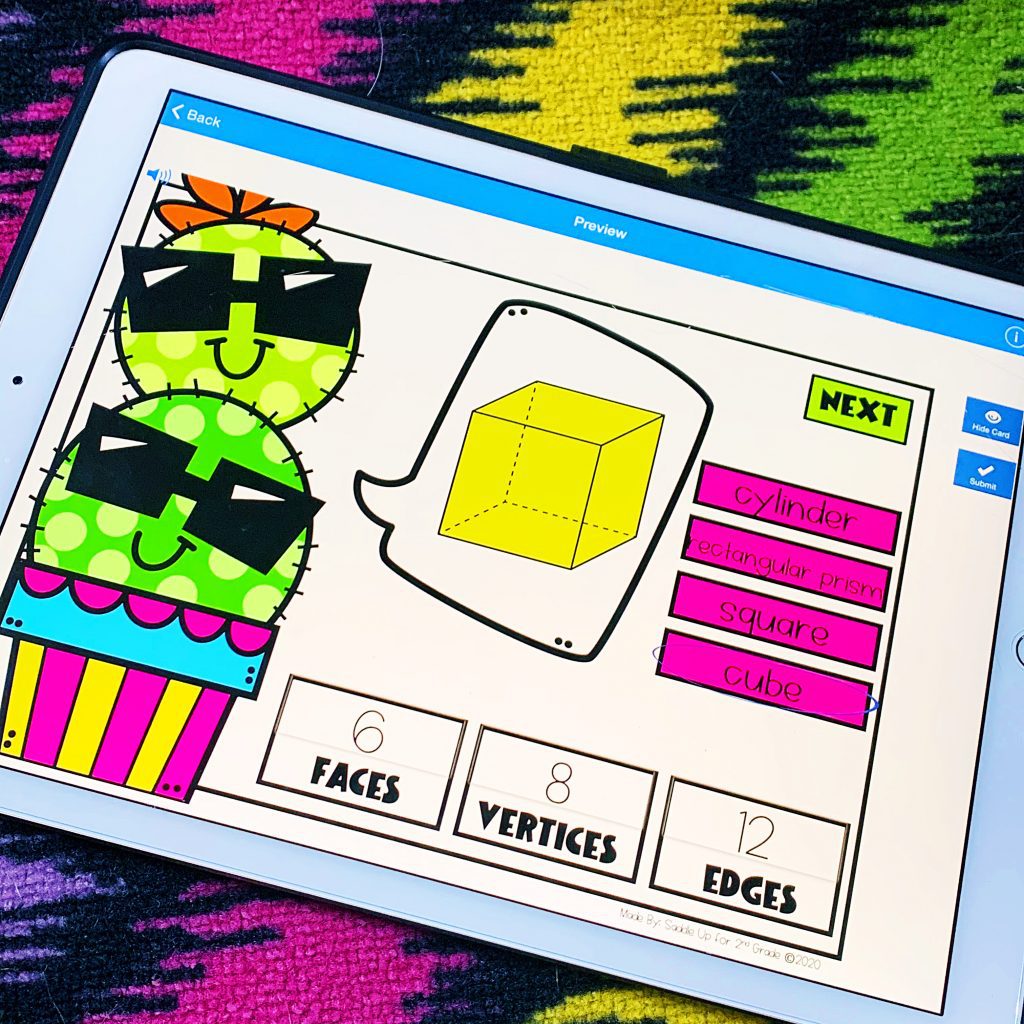
I hope these practical tips for teaching about 3D shapes with activities for 2nd grade have given you more ideas for hands-on activities in your classroom! For more ideas on teaching geometry, check out these blog posts for building a strong foundation of math skills:
Pin the image below to save this post for later!
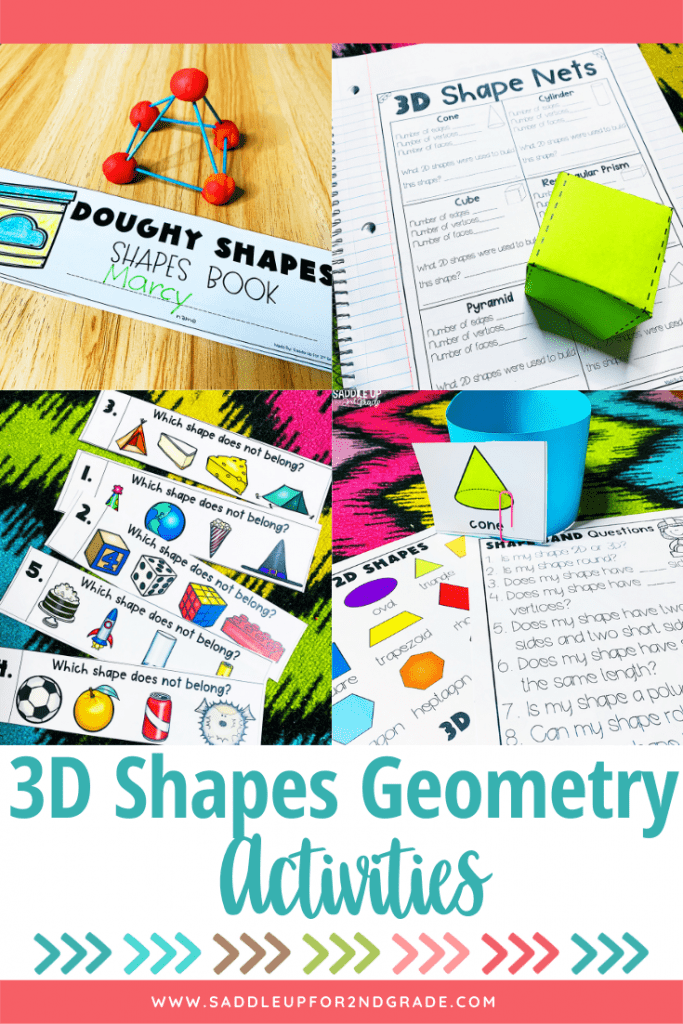
Math should be fun, not stressful. Ditch the timed math fact tests and replace them with math games that will help your students learn and retain information more effectively.
© Saddle Up for 2nd Grade • Website by KristenDoyle.co